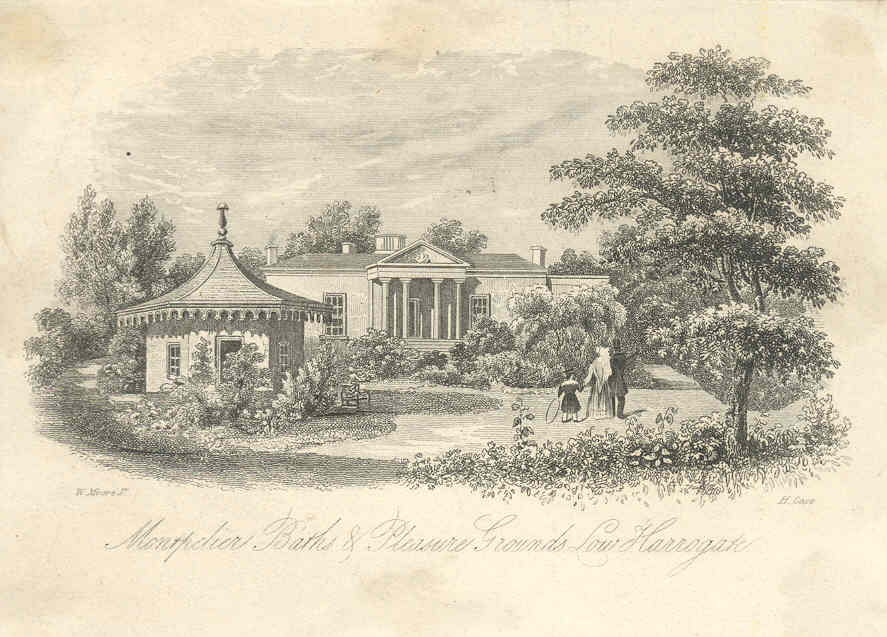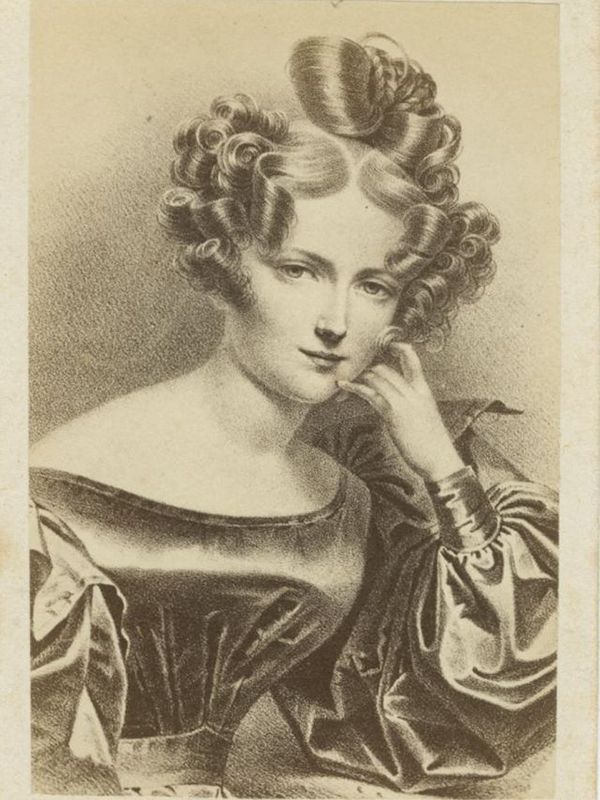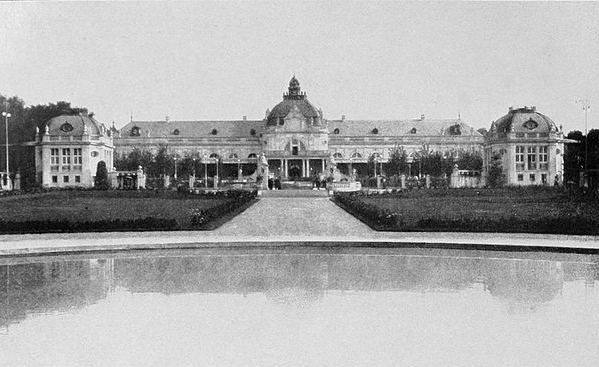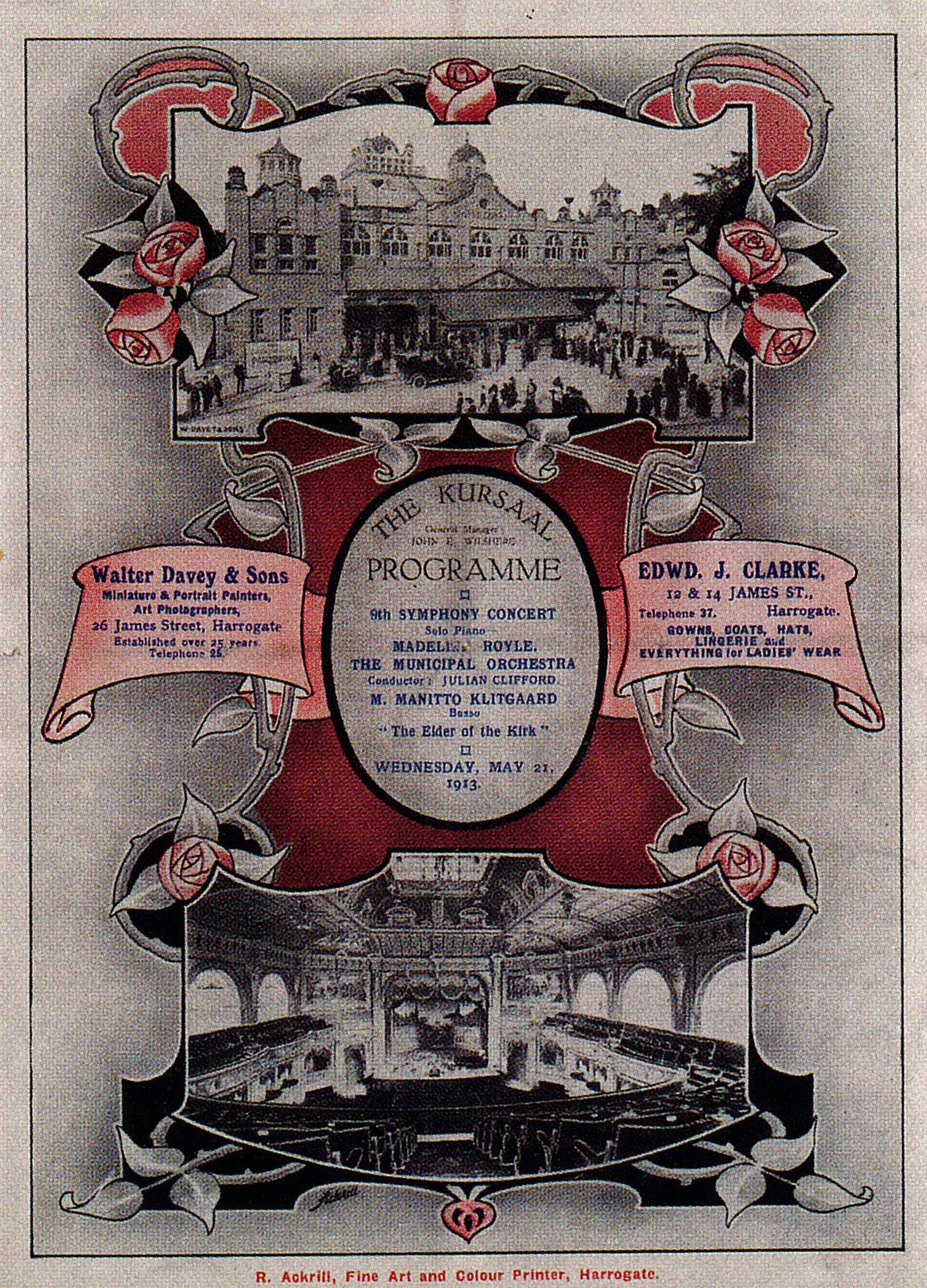Emulation

Enlightenment
thinking and changing medical opinion had a profound impact on the use and
design of spas in 18th century Europe (including Britain). The
traditional spa treatment practiced since Roman times was bathing. Drinking the
waters is a much younger practice, introduced in the course of the 17th
century and becoming more dominant in the 18th. Bathing was not
abolished entirely but significantly reduced (instigated by discussions about
the permeability of human skin and hence the ability of the water to get into
the body). This shift in medical theory and practice had crucial implications
for the rhythm and character of spa life and for the infrastructure of spa
places. The new spa routines were part of a larger dietetic regime and would
look approximately like this:
- getting up early in the day (6ish), going to the well and drinking the prescribed amount of water
- in-between the cups one was supposed to drink, and afterwards for at least an hour, walking was necessary, preferably in good company
- breakfast at about 9am, and then again some fresh air and exercise which could mean walking, but also hiking, hunting, or light sports
- lunch and rest afterwards
- for some patients a bath, for others a second round of drinking in the afternoon, and then again rest and good company
- evening meal, some reading or entertainment, early bedtime.
Fresh air, aesthetic enjoyment and
sociability had become part of the therapy. Almost as
important as the springs themselves was now their environment: a pleasant
landscape, space for easy walks, preferably a promenade leading from and to the
spring or pumping station, and a variety of public rooms for communal activities
such as eating together, dancing, conversing, playing cards, games, musical
instruments, even amateur dramatics, and so on. Looking at the histories of
individual spas, we can see that they were either newly created (as demand
grew) or drastically re-shaped and extended in this period. Places like
Pyrmont, Carlsbad, Baden-Baden, Vichy, Montecatini Terme etc., but also
Bath, owe their current shape and design to this development: thus the
foundations for a modern spa culture were laid.
![]()
![]()


Left: promenade in Pyrmont, right: the covered promenade in Marienbad
Source: Wikimedia Commons
Source: Wikimedia Commons
Harrogate
developed as it did to keep step with these wider trends. The Promenade Room (today the Mercer Gallery) was
constructed in 1806 to create a large, central space indoors in which to
promenade, often to the accompaniment of music. It also acted as an Assembly
Room, hosting balls, lectures and other sociable events. In 1835, landscaped
pleasure grounds were created around the Montpellier Baths, and a terrace and
gardens were laid out to the rear of the Royal Promenade and Cheltenham Pump
Room, accessed by glazed doors at the far end of the grand saloon, where rose
gardens and bandstands offered an elegant environment for promenading. Later in
the century, the Valley Gardens, occupying an area of ground known as Bog’s
Fields, were created on the model of the continental Kurpark.

Image © Royal Pump Room Museum, Harrogate Borough Council
When building work was
underway on the foundations for the Montpellier Baths in 1833, six new mineral
wells were discovered. One of them resembled in its composition the Rakoczy Quelle in Bad Kissingen, a famous Bavarian spa. In naming it
Kissingen Well, proprietor Joseph Thackwray
is likely to have wanted to garner the prestige accruing from association with
this long established resort. In this, he was merely repeating what Cheltenham
and other British spas had already done by naming
various elements of their spa infrastructure after
the French town of Montpellier which had long been celebrated for its services to
health.
![]()
![]()


Left: Analysis
of the Kissingen Well by R. Hayton Davis, 1884
Right: Montpellier, France, Source: Wikimedia Commons
Right: Montpellier, France, Source: Wikimedia Commons
As mentioned before, entertainment was an integral part
of the spa experience. When Thomas Gordon was tasked with managing the musical
entertainment in Harrogate’s Spa Rooms (later the Royal Spa Concert Rooms), he
made a point of offering high-quality concerts
and engaging orchestra players and soloists of national and even
international acclaim. ‘The greatest occasion of all must have been that of 6th
October 1849, when the artists were Henrietta Sontag (for whom both Weber and
Beethoven wrote major parts); Lablanche, for whom Schubert wrote songs, […] and
Thalberg. […] Short of attracting the ailing Chopin to Harrogate, or Liszt,
Gordon could scarcely have found greater artists than he did.’ (H. H. Walker) He thus fashioned a concert culture that was equivalent to that
offered in Baden-Baden’s Maison de
Conversation.
![]()
![]()


Musicians Henrietta Sontag (1806-1854) and Sigismund Thalberg (1812-1871)
Source: Wikimedia Commons
Source: Wikimedia Commons
 Image © Royal Pump Room Museum, Harrogate Borough Council
Image © Royal Pump Room Museum, Harrogate Borough Council
Another continental import was the Kursaal (later: Royal Hall). As
early as 1841 Augustus Bozzi Granville, in his Spas of England, had suggested that Harrogate might benefit from
the erection of a kursaal building in
its centre, which would combine various functions such as dining hall, assembly
hall, music hall, theatre, casino, and even hotel. Half a century later, this
suggestion was put into practice. In doing this, Harrogate ‘broke with the
established British spa tradition, moving quite deliberately toward the
continental manner.’ (F. L. Wright) The preparation for the project entailed
the minute inspection of several continental specimens. Then, after a
downscaling of the plans to match the available funding, construction work
began in the spring of 1901, with the official opening taking place on 28 May
1903. The building was surrounded by a whole complex of public spaces –
gardens, walkways, bandstands, tennis courts – designed for mingling, exercise
and relaxation. This too was in conscious emulation of continental models.



Visited in preparation for Harrogate: Kursaal buildings in Ostend (top), Bad Oeynhausen (bottom left) and Marienbad (bottom right)
Source: Wikimedia Commons
Source: Wikimedia Commons
With regard to the strictly medical side of the
spa, too, Harrogate looked to the continent. The variety of its wells allowed
it to diversify the treatments on offer by taking up some new developments. The British Medical Journal of
July 1919 reports that: ‘In order
to make the best use of these mineral waters the Harrogate Corporation […] has
spent nearly a quarter of a million pounds on the provision of modern bathing
establishments. Besides the local sulphur water baths, apparatus for almost
every approved balneological and electrical treatment has been set up […]. At
the Royal Baths more than seventy different baths, packs, douches,
massage-douches, electrical treatments, and accessory treatments are given by
trained attendants.’ And
in order to spread the word about this among the members of the medical
profession, discounts were offered and information materials printed.
![]()
![]()
![]()

Images (right and centre) © Royal Pump Room Museum, Harrogate Borough Council; (left): Wikimedia Commons
Whilst the number of visitors from abroad never grew very
large, there were performers and craftsmen who came over for business, and some
of them stayed, giving Harrogate a special kudos. Notable instances of this
were the Italian Antonio Fattorini who opened a jewellery shop in Harrogate in
1831 to take advantage of the seasonal trade; and dressmaker Louis Cope whose
Jewish family had come from Poland to London, and who settled in Harrogate in
1914. Having initially moved here for reasons of health – he suffered from
asthma – he realised the business opportunities and became a big player in the
fashion industry. And there was of course Fritz Bützner (later Belmont) who
came to Yorkshire from Switzerland in 1907, worked as a chocolatier in
Harrogate from 1912, and founded Betty’s Tearooms
in 1919. Interestingly, it is today of course a very English institution.
![]()
![]()


Left: Betty’s tearooms, right: Fattorini’s jewellery shop
Source: Wikimedia Commons
Source: Wikimedia Commons

From Kursaal, p. 29



